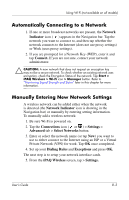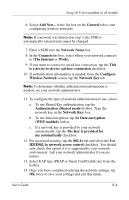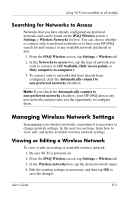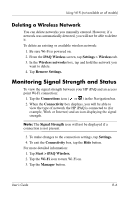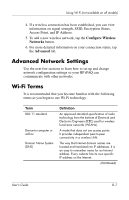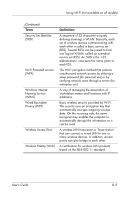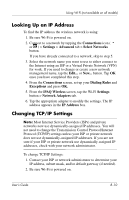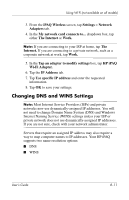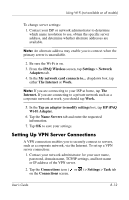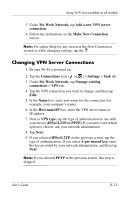HP Hx2790b HP iPAQ hx2000 series Pocket PC - User's Guide - Page 104
Definition, Media Access Control
 |
UPC - 882780110014
View all HP Hx2790b manuals
Add to My Manuals
Save this manual to your list of manuals |
Page 104 highlights
Using Wi-Fi (not available on all models) (Continued) Term Encryption Hotspots Infrastructure Internet Protocol (IP) Address Media Access Control (MAC) Address Definition An alphanumeric (letters and/or numbers) conversion process of data primarily used for protection against any unauthorized person(s). Public or private areas where you can access Wi-Fi service. These wireless connections can be located, for example, at a library, cyber cafe, hotel, airport lounge, or convention center. This service can be free or sometimes requires a fee. This connection mode uses wireless access points to connect to networks. A 128-bit number that identifies each sender or receiver of information that is sent in packets across the Internet. For example, when you request an HTML page or send e-mail, the Internet Protocol part of TCP/IP includes your IP address in the message. In this example, this information identifies your computer as the sender and/or receiver of information. A computer's unique hardware number in a network, which also can provide security for wireless networks. When a network uses a MAC table, only the 802.11 radios (wireless devices) that have had their MAC addresses added to that network's MAC table can access the network. (Continued) User's Guide 8-8



